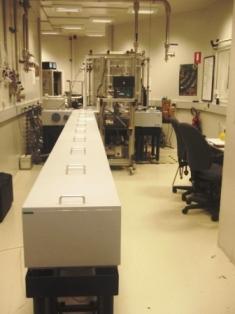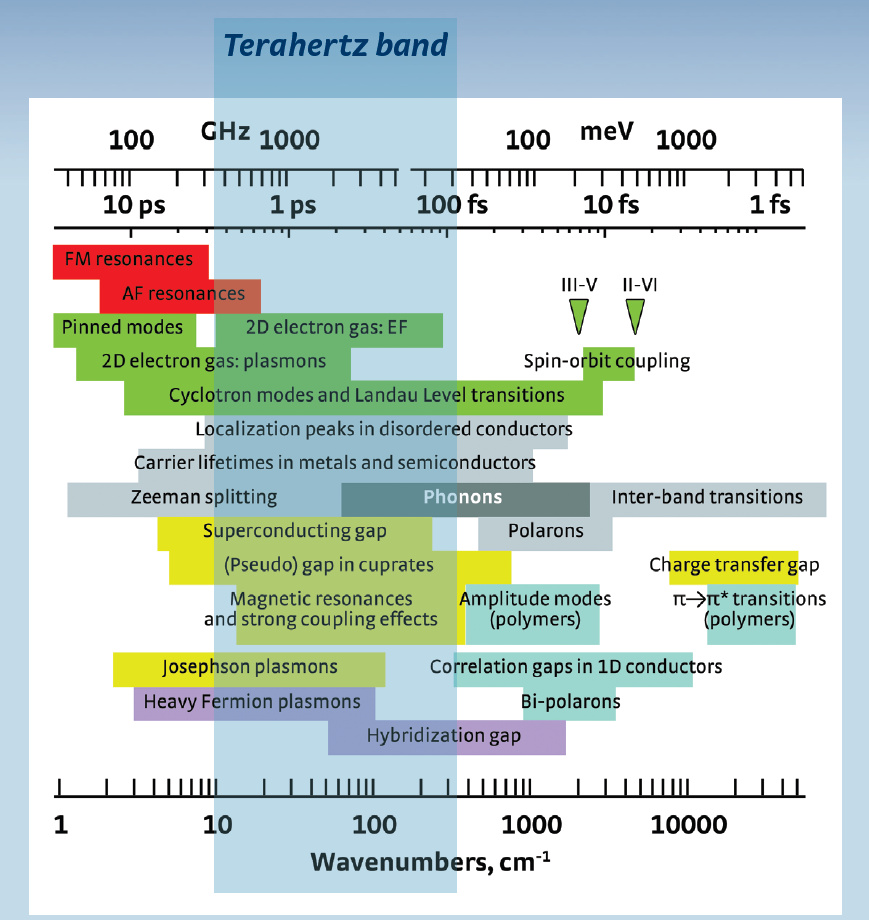Contents
Introduction
The THz/Far-IR Beamline is coupled to a Brüker IFS 125/HR Fourier Transform (FT) spectrometer.
This instrument can be connected to a multitude of accessories and components, allowing a variety gas and condensed phase experiments (see Samples) to be conducted across a wide spectral range: THz – visible frequencies.
We also have a community on Facebook.
THz/Far-IR Applications
THz/Far IR studies using synchrotron radiation can involve the study of:
- Gases
- Surfaces
- Materials
- Cultural Heritage
- Forensic studies
- Protein higher order structures
 |
 |
|
The THz/Far-IR hutch. |
The Bruker IFS125HR FTIR Spectrometer |
1 THz = 1012 Hz = 300 μm ~ 33 cm−1 ~ 4 meV ~ 50 K
Why would you use this beamline?
Synchrotron light has a number of unique properties:
- Wide spectral coverage: synchrotron light is emitted with energies ranging from microwave to hard x-rays.
- High brightness: synchrotron light is extremely intense (hundreds of thousands of times more intense than that from conventional x-ray tubes or Globar sources), enabling quick experiments on low concentration/thin samples, e.g. weak IR absorbers, gases with low vapor-pressures, thin films, isotopes in small abundances.
- Collimated: The lightsource at the Australian synchrotron is roughly 400 microns in diameter and thus can be treated as a point source. The beam can therefore easily be collimated allowing for high spectral resolution (FIR & HR beamline).
- Highly polarised: the synchrotron emits highly polarised radiation (elliptical for the bend magnet radiation and radial for the edge radiation); linear, circular or elliptical. This minimises background scattering, improves sensitivity and enables measurement of circular dichroism and ellipsometry.
Combining a Fourier spectrometer capable of achieving ultra high spectral resolutions with the highly collimated and intense source of the synchrotron creates an ideal instrument to measure the rotational spectra of gases. The high intensity of the source also means it is ideal for the study of thin samples in transmission or reflection, where the optical path of interaction is very small. In addition, as the beam displays a high level of polarisation, it is also excellent for the study of samples with oriented IR absorbing bonds (these studies require sample holders with angle adjustments; see Samples).

